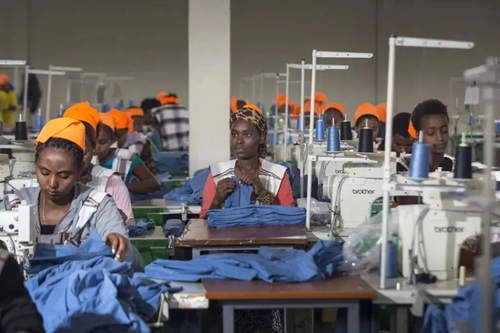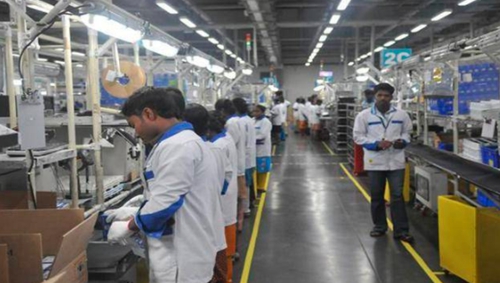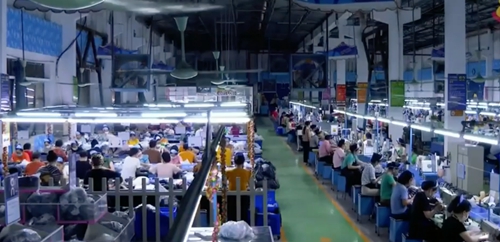The world is in order shortage,Orders of many export countries fell precipitously
25 August 2022The conflict between Russia and Ukraine has intensified global differences, hindered global cooperation, and led to the accelerated brewing of a comprehensive crisis. Of course, the current crisis is not a single one, but a comprehensive one. It is the result of multiple crises such as the acceleration of labor substitution by artificial intelligence robots, the insufficient supply and demand of capitalism, the supply chain crisis caused by the epidemic, the raw material inflation caused by the conflict between Russia and Ukraine, and the Federal Reserve's forced interest rate increase to curb the stock market. At present, there are problems in the global supply chain, and the global demand is further reduced, which is manifested by the obvious drop in orders. Production stoppage, holidays, lack of orders, intermittent resumption of work and so on are becoming hot topics recently.
Recently, the news of "shortage of orders" of domestic manufacturing factories has been reported in the newspapers. However, the Vietnamese factories that had been in hot orders and even queued until the end of the year began to "lack orders". Many factories reduced their overtime hours and began to stop production and have holidays. Even the factories of Samsung, a well-known electronic enterprise, have been affected. Last year, when the COVID-19 epidemic was most serious, commercial activities were even more active, but now they are depressed. At present, a series of industrial manufacturing countries, such as Germany, India, Vietnam and Bangladesh, have started to run trade deficits and suffered a precipitous drop in orders !
No order ! Orders from Vietnam, India and Bangladesh fell precipitously
As a big financier in Vietnam, Samsung Group is not only the largest foreign investor in the country, but also the largest exporter in Vietnam. One company contributes one fifth of Vietnam's export value. Now Samsung is facing a depression, which mercilessly exposes the contrast state of many Southeast Asian countries recently.
Several months ago, Vietnam's factories, which could not recruit workers and were full of orders, are now short of orders. Vietnamese media vnexpress reported that after six months of strong recovery in the first half of the year, many factories began to lack orders in the second half of the year, and had to shorten production time, stop recruitment and reduce labor.
In the second quarter, the outbreak of the Russian Ukrainian war, the rise in oil prices, and the epidemic... Had an impact on people's global consumption habits. The purchasing power of fashion clothing products has dropped sharply, the inventory cannot be sold, and the brand does not sign new orders. Some factories have no orders, forcing them to recalculate appropriate employment plans.
A person in charge of the Vietnam factory said that the factory is still operating normally, but from September to October, orders will be lost. According to the plan, the enterprise will arrange workers to take leave at the same time. In combination with the National Day holiday, the factory will stop production for 8 days. Then, the company will arrange the workers to take leave on Saturdays as appropriate to reduce overtime. Workers' income is expected to decrease by 10-20%.
Mr. tran Viet Anh, vice president of Ho Chi Minh City Business Association, said that the production of electronics, textile shoes and clothing, wood, steel and other industries also faced many difficulties due to the decline of purchasing power in key markets. This year, the market is "cold" and the factory has a large amount of inventory, but there is no buyer after the price reduction. The enterprise has to rearrange production activities and reduce working hours. At present, the factory mainly reduces overtime and annual leave. However, the next workload will not be enough for workers to work 8 hours a day for a week.
Affected by the global economic recession, India's textile industry is experiencing gusts of cold wind. Due to the slow demand of Western retail brands, the export orders of clothing and home textiles from the United States and Europe decreased by about 15% - 20%. In Panipat, an important home textile production center, there are signs that export orders have dropped by as much as 40%. It is reported that the inflation and interest rate rise caused by the Russian Ukrainian war are the reasons for the economic recession and the reduction of export orders.
According to the data released by the Ministry of industry and Commerce of India, in June 2022, the export volume of cotton yarn, fabrics, finished products and hand woven products decreased by 19.49% to US $962 million; The overall export of cotton textiles decreased by 14.30% to 1.699 billion yuan.

Industry sources said that importers from western countries not only reduced orders for the next quarter, but also delayed the delivery of previous orders. Due to high inflation, retail sales in western countries have slowed sharply. The warehouse is full of unsold goods.
After participating in the Trade Fair held in Germany in June, Panipat's exporters said that their orders for home textile exports had decreased by 40% compared with last year. Ramesh Verma, an exporter of Panipat and a member of the handloom Export Promotion Committee, said that large companies and retail brands from the United States and Europe purchased a large number of home textile products last year, but the retail sales were still very weak. Therefore, they have to reduce their purchases, and exporters' orders for the next quarter are reduced.
On the whole, since the second quarter of 2022, the cotton textile and clothing industry in Southeast Asia has been caught in the dilemma of "upside down" in production and sales, declining orders, and the cotton consumption has obviously reached the peak. According to the Pakistan Textile Mills Association, the textile industry will not only reduce its output by more than 50% due to shutdown, but also be forced to borrow US $6 billion from overseas due to energy supply and cost constraints; At the same time, it faces the risk of losing orders, customers and losses due to breach of contract.
Since the middle of July, the phenomenon of buyers demanding to cancel the contract has continued to increase, including some cotton textile mills and intermediate merchants and old customers who have cooperated with each other for many years. The contract performance rate has dropped again and again. At present, the most severely damaged area is pengha Province in Pakistan. Textile mills in this area account for 70% of the country. 400 textile mills have been shut down and thousands of people have lost their jobs.
The reason for the decline of new orders of Pakistan's cotton textiles and clothing exports is also the shortage of energy, including the serious shortage of power and natural gas supply, which has led to the closure of about 30% of Pakistan's textile production capacity. The enthusiasm of Pakistan's cotton textiles and clothing enterprises in recent production and order receiving has significantly decreased, and the decline of cotton consumption demand is faster than expected.
Recently, garment orders in Bangladesh, a South Asian country, have dropped sharply. Bangladesh is the world's second largest clothing exporter after China, but it is still facing the risk of cost surge or hindering its recovery from the epidemic.
The supplier of Zara, a subsidiary of PVH and INDITEX SA, said that the new orders of the company in July decreased by 20% compared with the same period of last year. It also said that retailers in Europe and the United States had either delayed the delivery of finished products or postponed orders.

The inflation of export destinations soared, which had a serious impact on local foreign trade export enterprises. In addition, the weakening of the euro against the US dollar has weakened the attractiveness of Bangladesh's export products. It is reported that the clothing industry accounts for more than 10% of the country's GDP and employs 4.4 million people. Therefore, the reduction of clothing orders is a risk facing the economy of Bangladesh.
According to the data released by the German Federal Bureau of statistics, affected by the decrease of new orders outside the euro zone, after adjustment of seasons and working days, the new orders of German industry in June this year decreased by 0.4% month on month, the fifth consecutive month on month decline. In June, Germany's foreign new orders decreased by 1.4% month on month; New orders from outside the euro area decreased by 4.3% month on month. In addition, the German Federal Bureau of statistics adjusted the new orders of German industry in May this year from an increase of 0.1% in the initial value to a decrease of 0.2% in the month on month.
The German Federal Ministry of economy and climate protection issued a statement on the same day, saying that due to the uncertainty caused by the crisis in Ukraine and the natural gas shortage, the demand for new industrial orders continued to be weak, and the industrial economic prospects were still suppressed.
The demand slows down, the risk of economic recession heats up, and high-end competition begins
Since the beginning of this year, thanks to the rapid development of the textile industry and low labor costs, the export orders of textile and clothing in Southeast Asia have surged, and the export earnings have been strong. However, since the middle of the second quarter, the growth of new orders has begun to slow down, and it is expected that the profit in the second half of this year will shrink significantly. The decrease of new orders is mainly due to the reduction of consumption in peripheral markets, especially in the United States and the European Union, which are facing the increase of import inventories and the high inflation pressure in the second half of 2022 and the beginning of 2023.
In addition, the impact of the conflict between Russia and Ukraine is still continuing. Combined with the risk escalation of global inflation, sales in the United States and Europe show a downward trend. Buyers are cautious about placing new orders, and delays and cancellations of orders are common. The terminal consumer market has shrunk seriously, and many factories have started to lack orders. Therefore, optimization measures such as holidays, compensatory leave, and even staff reduction and salary reduction have "blossomed everywhere". It seems that the situation this year is much more serious than that during the epidemic period last year.
In other words, the orders of developed countries are rapidly decreasing, which is a nightmare for many large manufacturing countries. The advantages of South Asian countries and Southeast Asia are basically demographic dividend and low cost, generally in the low-end industrial chain. However, with the rise of labor costs and freight prices, these dividends have disappeared under the epidemic. In the era of reduction, it has become a "worthless" competitiveness. The real test is the manufacturing capacity and product level of the enterprise, not the low-end manufacturing under low cost.
Under the current severe economic situation, high-end manufacturing industries such as semiconductors, photovoltaic, electronics and automobiles all need more sophisticated technologies, parts and talents. Therefore, for the global manufacturing industry, the iterative updating from the "industrial chain" to the "value chain" is rapidly underway, and the reshuffle of plastics, chemicals, supporting parts, packaging and other industries in the upstream of the industrial chain is also accelerating.




